You’ll find three essential gemstone cutting angle charts that determine brilliance and fire. Round brilliant cuts require crown angles of 34°-35° and pavilion depths of 42%-45% for ideal light reflection. Princess cuts need steeper crown angles at 40°-45° with similar pavilion depths for maximum sparkle. Step cuts like emerald and Asscher variations use pavilion angles of 40.5°-42.5° to create visual depth through stepped terraces. These precise specifications will reveal the secrets to perfect light performance.
Round Brilliant and Princess Cut Angle Specifications
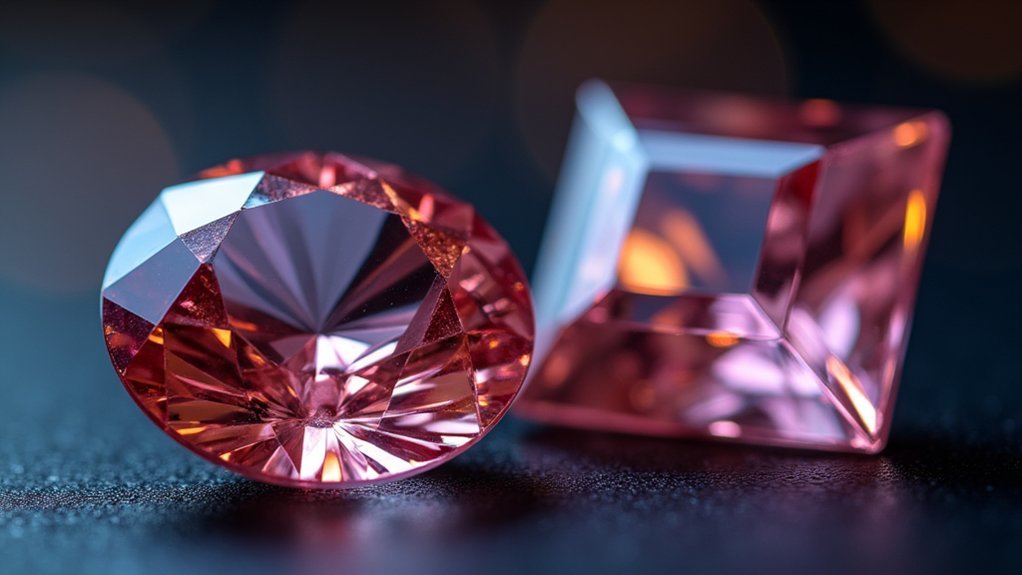
The Round Brilliant cut’s precise angles create its legendary sparkle through carefully calibrated proportions.
Meticulously engineered facet angles and mathematical proportions transform raw gemstones into brilliant light-catching masterpieces.
You’ll find its ideal table size ranges from 53% to 58% of total diameter, while the crown angle sits between 34° and 35° for maximum light reflection. The pavilion depth typically measures 42% to 45%, balancing brilliance with clarity across its 58 facets.
The Princess cut offers a modern aesthetic with different specifications.
You’ll notice its table size spans 68% to 75%, paired with a steeper crown angle of 40° to 45°. Its pavilion depth mirrors the round brilliant cut at 40% to 45%, but utilizes approximately 76 facets for enhanced brilliance.
Both gemstone cuts maximize light performance through their distinct angular geometries.
Step Cut Variations: Emerald and Asscher Angle Charts
Step cut variations showcase a dramatically different approach to gemstone cutting, prioritizing clarity and color over the fire-focused brilliance of round and princess cuts.
You’ll find emerald cut gemstones feature a rectangular shape with approximately 50 facets that reflect light through stepped terraces, creating stunning visual depth.
The Asscher cut offers an octagonal alternative with 58 facets and cut corners, producing a mesmerizing “hall of mirrors” effect.
When you’re selecting these high-quality gemstones, you’ll notice the pavilion angle matters greatly.
Emerald cuts typically require angles between 40.5° and 42.5°, while Asscher cuts perform best around 41.75°.
Both gemstone cuts demand exceptional precision, with the Asscher cut creating higher production costs due to substantial weight loss during cutting.
Modified Brilliant Cut Angles for Maximum Light Return
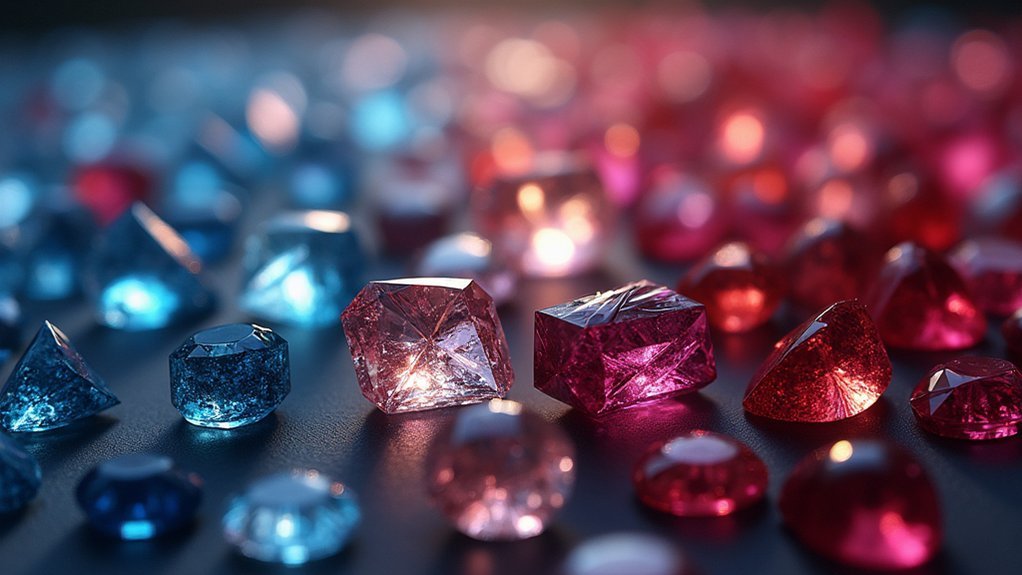
While step cuts emphasize clarity through their geometric precision, modified brilliant cuts take a completely different approach by combining the best elements of both brilliant and step cutting techniques to achieve maximum light return.
You’ll find this modified brilliant cut features 56 to 58 facets specifically designed to maximize brilliance and fire in your gemstones through enhanced light interaction.
The angles are vital for ideal sparkle – you’ll want crown angles between 34-35 degrees and pavilion angles from 40.6-41 degrees.
This configuration effectively hides inclusions while creating greater light dispersion, making it perfect for colored gemstones like Paraiba tourmaline and lighter diamonds.
The result? A visual striking appearance that delivers exceptional brilliance through carefully calculated facet positioning.
Frequently Asked Questions
What Is the Most Popular Gemstone Cut?
You’ll find the Round Brilliant Cut is the most popular gemstone cut. It’s renowned for its 58 facets that maximize sparkle and brilliance, making it the top choice for most jewelry buyers.
What Are the Top 3 Gemstones?
You’ll find diamonds, rubies, and sapphires are the top three most popular gemstones. They’re highly valued for their beauty, durability, and desirability in jewelry markets worldwide, representing significant portions of gemstone sales.
What Are the 4 C’s of Gemstone Grading?
When you’re evaluating gemstones, you’ll use the 4 C’s: Cut, which determines brilliance; Color, measuring hue and saturation; Clarity, examining inclusions; and Carat weight, indicating size and mass.
What Are the Top 4 Gemstones?
You’ll find diamonds, sapphires, emeralds, and rubies ranking as the top four gemstones. You’re looking at stones prized for their beauty, rarity, and durability, with diamonds leading in popularity for engagement rings.
In Summary
You’ll achieve stunning results by following these angle specifications for your gemstone cutting projects. Whether you’re working with round brilliants, princess cuts, or step cuts, precise angles determine your stone’s brilliance and fire. Don’t compromise on measurements—even small deviations affect light performance dramatically. Master these three cutting styles, and you’ll create gems that maximize sparkle and value. Remember, consistency in your angle cuts separates professional results from amateur attempts.

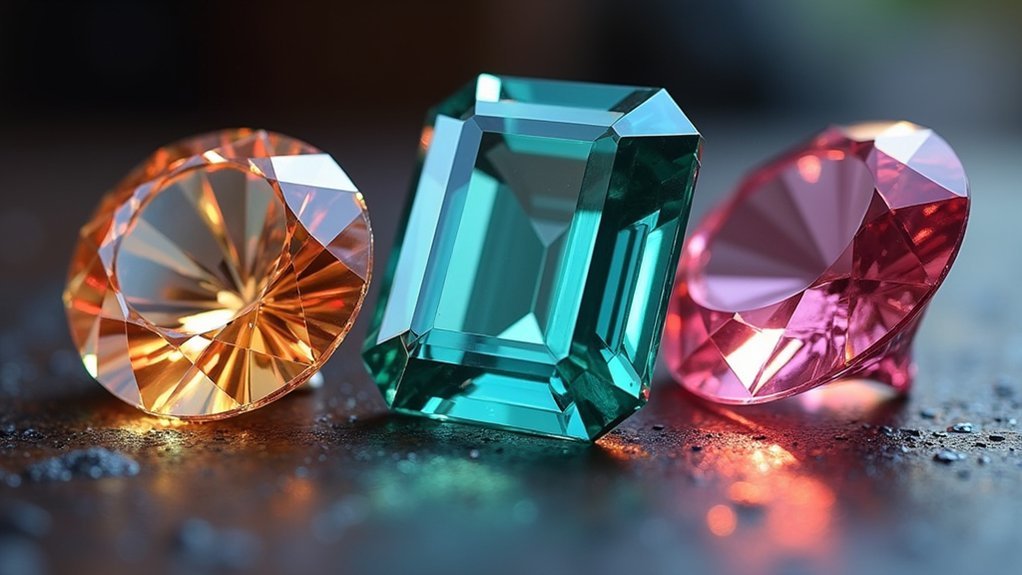

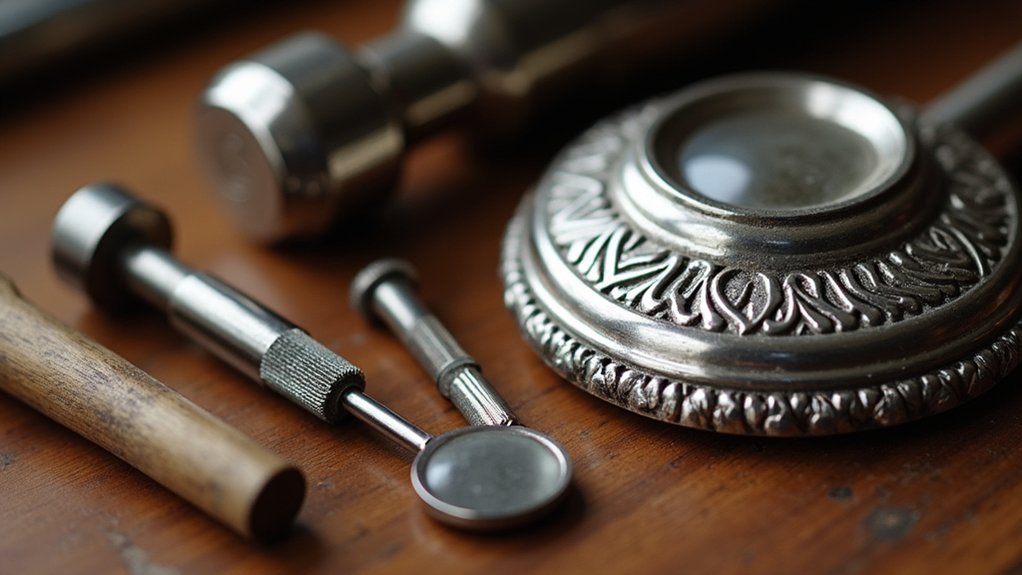
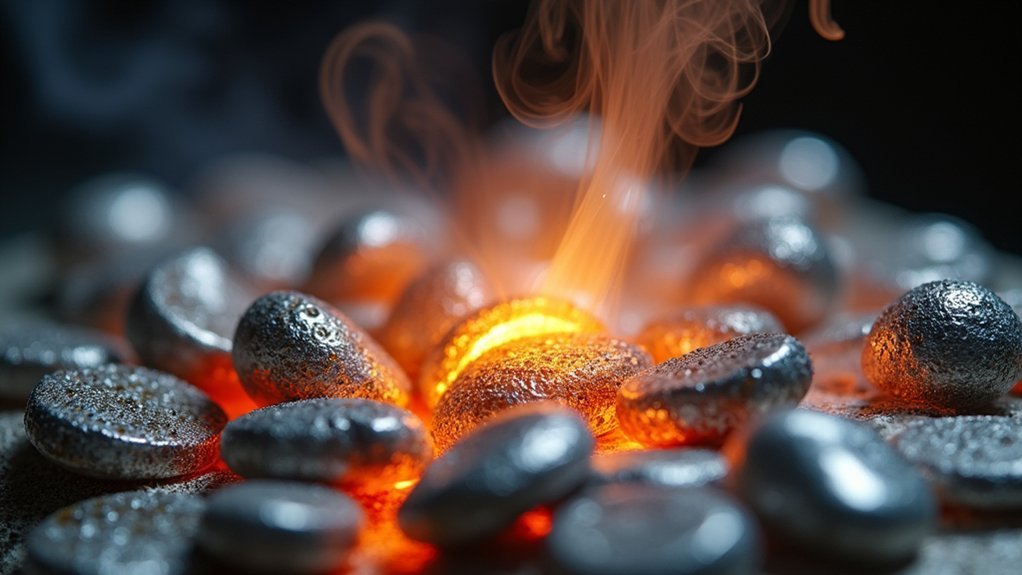
Leave a Reply